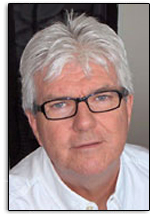To produce commodities for global markets, additional land is required. This demand naturally competes for the most productive and accessible lands. There is, however, less under-utilized productive land than most people assume there to be. Converting that land seems to be always associated with social and ecological trade-offs. The result is that there are two competing views on the global availability of productive land:
- Is there a finite amount of suitable land, leading to a strict competition between land uses
- Will increases in the price of goods produced from the land make it economically feasible to convert marginal lands into viable crop lands?
The head-butting over global land use is expected to continue between forests and agriculture. This includes friction between urban land use and full agriculture; tree plantations and natural forests; fuel crops, feed crops, and food crops and intensive cropland; and extensive agriculture. Land changes are increasingly influenced by the impact of globalization.
Despite a continuous increase in the productivity of agriculture and forestry, the pressure to convert natural ecosystems remains high. Human population growth and increases in per capita consumption of material goods will only lead to a growing demand for goods produced from the land. Over the last decade, the lands on which these commodities are produced for high-income elasticity in global markets (e.g., soybean, palm oil, beef, coffee, timber), have expanded at a high rate of speed. As people get more income, global food demand is projected to grow significantly. The environmental impacts of meeting this demand will depend on whether current trends of greater agricultural intensification in richer nations and greater land clearing in poorer regions continue.1
As long as the rate of increase in demand is greater than the rate of productivity increase, conversion of land under natural vegetation cover to productive uses will be unavoidable. Additional land demands often compete for the most productive and accessible lands that are least vulnerable to natural hazards and climate change. It's more likely to work where a skilled labour force is available, and where political stability favours productive uses and long-term investments in infrastructures. I have often thought that, in my home province of Ontario, where the major electric utility is one of the largest land-owners, arable and accessible land could be used between transmission towers. Provided skilled users and an ingrained culture of safety are at work, why couldn't the land be used?
|
Primary land use in 2000 and 2010 in millions of hectares (Mha)
|
||||
|
Area 2000
|
Annual change 2000-2010
|
|||
|
Low
|
High
|
Low
|
High
|
|
| Cropland |
1,510
|
1,518
|
+0.2
|
+1.7
|
| Pastures |
2,800
|
3,410
|
-7.7
|
-7.2
|
| Natural forests |
3,143
|
3,871
|
-11.3
|
-10.1
|
| Gross deforestation |
-15.2
|
-13.0
|
||
| Gross natural regrowth |
+3.9
|
+2.9
|
||
| Planted forests |
126
|
215
|
+4.9
|
+4.9
|
| Urban built-up area |
60
|
73
|
+1.0
|
+2.7
|
| Potential available cropland (without forest conversion) |
138
|
445
|
||
The most important, and least known, figure for global land-use budgeting is the area of potential available cropland (PAC). It is defined as the moderately to highly productive land that could be used in the future for rain fed farming, with low to moderate capital investments. This land is neither under intensive use, legally protected, nor under intact forest cover. Only about one quarter of the total ice-free land is suitable for rain fed agriculture given temperature, rainfall, and soil constraints.
Early estimates of the amount of land available for future expansion of cultivation ranged from 1,670 to 1,900 Mha in developing countries, depending on the method used, with around 2,300 Mha globally. More recent, global-scale PAC estimates have significantly revised these figures downward. A new global assessment of agro-ecological zones identified 3,330 Mha of land that are very to moderately suitable for rain fed crop production.2 According to the World Bank (2010), of the uncultivated fraction of these lands (1,800 Mha), only 445 Mha globally are non-forested, non-protected, and populated with less than 25 persons per square kilometre. They are therefore assumed to be available for potential cropland expansion if one attempts to minimize ecological costs of land conversion. Adopting an explicit, country-by-country approach, a recent report based on a limited number of regional or country case studies (including the South American Chaco, Cerrado, the Amazon arc of deforestation, Democratic Republic of Congo, Indonesia, and Russia) suggests there is less PAC than is generally assumed. It is also true that converting land is always associated with social and ecological trade-offs. In fact, once social, institutional, economic, and physical constraints are taken into account, there are few remaining places with free and easy' lands available. Ecological costs of converting that remaining land would be significant, both in terms of carbon and biodiversity.
Multiple demands for land cumulate and lead to rapid conversion. Demands for more cropland lead to:
- An increase in food, feedstocks, and fuel production
- The need for industrial forestry to produce more timber
- Fast-growing trees for carbon sequestration
- A requirement for urban and recreational spaces to accommodate growing urban populations
In addition, demand for protected areas for nature and biodiversity conservation as well as for natural or managed ecosystems to provide a range of regulation and cultural ecosystem services further contribute to potential conflicts between various land uses.
Globally, to feed a growing population may require an additional 2.7 to 4.9 Mha of cropland per year on average, depending on future diets, food wastages, and food-to-feed efficiency in animal production. Currently it looks like most of this expansion will be needed in Latin America and Africa while cropland is expected to decline in developed countries. In 2007, production of feedstocks for the then current generation of biofuels required about 25 Mha. Meeting today's needs would mean biofuel use would require an increase of 1.5 to 3.9 Mha per year. Projections of pasture expansion range between 0 and 5 Mha per year depending on the intensity of livestock production systems, which have become increasingly decoupled (i.e. less free range) from the land. Expansion would occur mainly in Latin America and East Asia, while pasture area would decrease in North America and Europe.
The land footprint of cities is less than 0.5 percent of Earth's total land area, but urban area is predicted to more than double by 2030, according to the low scenario, expanding most rapidly in sub-Saharan Africa as well as in South and Central Asia. Demand for industrial forestry will grow by 1.9 to 3.6 Mha per year mainly in Asia and subtropical regions, to meet an increase in demand for wood products of 2.8 to 40.3 percent depending on income, flexibility of demand, and on fuelwood substitution. Industrial forestry may replace natural forests but will also encroach on agricultural land. Protected areas will continue to expand by 0.9 to 2.7 Mha per year. Land degradation negatively affects land production and makes about 1 to 2.9 Mha unsuitable for cultivation per year.3
Climate change will affect agriculture directly through changes in agro-ecological conditions potentially opening or closing lands for cultivation. With increasing competition between different land uses for accessing productive lands, greater attention must be given to geographic distribution of land use. This will require a better management of the externalities of land-use intensification on other natural resources and adjacent ecosystems. Going forward, key question need to be asked including: How should we manage trade-offs between food, fibre, feed, and fuel production and nature conservation? How will economic, social, and ecological costs of land conservation increase with land-use expansion? We need to look after these concerns if we ever hope to continue to live in concert with the needs of our planet.
1 Lambin, Eric F. and Patrick Meyfroidt. "Trends in Global Land-Use Competition." Rethinking Global Land Use in an Urban Era. Massachusetts (2014): 11
2 Ibid: 12
3 Ibid: 14











